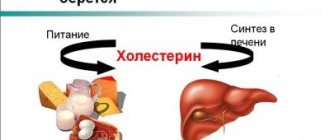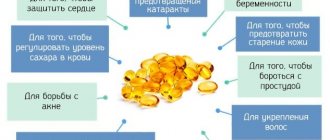Characteristic
What is sodium? This is a macronutrient. It plays an important role in the normal functioning of the body.
Its natural compounds have been known since ancient times. But the abbreviation was proposed in 1811.
In terms of distribution, this ranks 6th among chemical elements. It is the main one in the composition of sea water. This macroelement is found in all plant and animal organisms. At the same time, the latter have a higher percentage.
The human body contains about 100 grams of sodium. This macroelement is distributed throughout all organs and tissues. Half of the sodium is found in extracellular fluids. The remaining 50% is contained in tooth enamel and bone tissue.
Features and dosage
The discoverer of the element is considered to be H. Davy, a famous chemist from Great Britain. Sodium is classified as a metal. It has the following features:
- silver color;
- rapid dissolution in air.
The element Na is a chemical compound that belongs to the category of active ones, so it is difficult to find it in its pure form. The substance is found in plant and animal food sources. The main supplier is sodium chlorine (NaCl) or sodium chloride (table salt). It is possible to extract 55-60% chlorine and 35-40% sodium from it.
The body's daily requirement is 4-6 grams
.
By the way, this is the maximum dosage, which is easy to cover by taking foods with sodium. In this case, the minimum norm should be 1-2 grams
.
The need for it increases in the following cases:
- for severe burns;
- presence of diarrhea and vomiting;
- excessive sweating;
- increased loads in warm weather;
- with insufficiency of the adrenal cortex;
- while taking diuretics.
The role of sodium in the body
Before you understand which foods contain sodium, you need to identify the role of this element in the body. Normal functioning of the body is impossible without it.
Sodium acts as a cation in the extracellular fluid. It is involved in many life processes, namely:
- stimulates the digestive system;
- participates in the transport of glucose, various aninones, carbon dioxide through cell membranes;
- participates in the regulation of water-salt metabolism;
- activates digestive enzymes;
- reduces the risk of sunstroke or heatstroke;
- ensures uninterrupted functioning of the kidneys;
- retains fluid in the body, thereby preventing dehydration.
Also, for gastroudenitis, foods containing sodium are needed
Sodium (Na, Natrium)
History of sodium
Sodium in its pure form was obtained in 1807 by Humphry Davy, an English chemist who discovered potassium shortly before sodium. Davy carried out the process of electrolysis of one of the sodium compounds - hydroxide, which melted and obtained sodium. Humanity has been using sodium compounds since ancient times; soda of natural origin was used back in Ancient Egypt (calorizator). The element was called sodium, and sometimes this name can be found even now. The usual name sodium (from the Latin natrium - soda) was proposed by the Swede Jens Berzelius.
General characteristics of sodium
Sodium is an element of group I of III of the third period of the periodic table of chemical elements D.I. Mendeleev, has an atomic number of 11 and an atomic mass of 22.99. The accepted designation is Na (from the Latin natrium).
Being in nature
Sodium compounds are found in the earth's crust and sea water as an impurity that tends to color rock salt blue due to the action of radiation.
Physical and chemical properties
Sodium is a soft, malleable alkali metal that is silvery-white in color and shiny when cut fresh (it is quite possible to cut sodium with a knife). When pressure is applied, it turns into a transparent red substance; at normal temperatures it crystallizes. When interacting with air, it quickly oxidizes, so sodium must be stored under a layer of kerosene.
Daily sodium requirement
Sodium is an important microelement for the human body; the daily requirement for adults is 550 mg, for children and adolescents – 500-1300 mg. During pregnancy, the sodium norm per day is 500 mg, and in some cases (excessive sweating, dehydration, taking diuretics) should be increased.
Foods rich in sodium
Sodium is found in almost all seafood (crayfish, crabs, octopus, squid, mussels, seaweed), fish (anchovies, sardines, flounder, smelt, etc.), chicken eggs, cereals (buckwheat, rice, pearl barley, oatmeal, millet), legumes (peas, beans), vegetables (tomatoes, celery, carrots, cabbage, beets), dairy products and meat by-products.
Beneficial properties of sodium and its effect on the body
The beneficial properties of sodium for the body are:
- Normalization of water-salt metabolism;
- Activation of enzymes of the salivary and pancreas;
- Participation in the production of gastric juice;
- Maintaining normal acid-base balance;
- Generating functions of the nervous and muscular system;
- Vasodilator effect;
- Maintaining blood osmotic concentration.
Sodium digestibility
Sodium is found in almost all foods, although the body gets most of it (about 80%) from table salt. Absorption mainly occurs in the stomach and small intestine. Vitamin D improves the absorption of sodium, however, excessively salty foods and foods rich in protein interfere with normal absorption.
Interaction with others
Increased sodium intake causes fluid accumulation in the body, swelling, and increases blood pressure. Large sodium (salt) intake will deplete potassium, calcium and magnesium.
Uses of sodium in life
The use of sodium metal is in the chemical and metallurgical industries, where it acts as a powerful reducing agent. Sodium chloride (table salt) is used by all inhabitants of our planet without exception; it is the most famous flavoring agent and the oldest preservative.
Signs of sodium deficiency
Sodium deficiency usually occurs when you sweat excessively, such as in hot climates or during exercise. A lack of sodium in the body is characterized by memory impairment and loss of appetite, dizziness, fatigue, dehydration, muscle weakness, and sometimes cramps, skin rashes, stomach cramps, nausea, and vomiting.
Signs of excess sodium
An excessive amount of sodium in the body makes itself felt by constant thirst, swelling and allergic reactions.
Author: Victoria N. (especially for Calorizator.ru) Copying this article in whole or in part is prohibited.
Causes of sodium deficiency
A deficiency of this element may occur for the following reasons:
- Drinking plenty of water.
- Very small (less than half a gram per day) intake of sodium from food. This can occur with vegetarian and salt-free diets.
- Long-term use of diuretics.
- Excessive excretion of sodium. This occurs during heavy physical exertion and in hot weather.
- Dehydration due to food poisoning, diarrhea.
- Chronic diseases of the intestines, kidneys, adrenal glands.
Deficiency Symptoms
Symptoms of a lack of this element are as follows:
- fast fatiguability;
- loss of appetite;
- thirst;
- muscle cramps;
- weight loss;
- frequent infectious diseases;
- drowsiness;
- decreased skin elasticity.
Sodium deficiency leads to serious problems in the body. For example, a disorder of the central nervous system may occur. It is also possible that problems with the cardiovascular system may occur. Therefore, it is worth knowing which foods contain the most sodium in order to replenish your reserves if you are deficient in this macronutrient.
Sodium deficiency and excess
A person must adjust their diet so that the sodium in food covers the daily requirement. This is important, because in case of deficiency, a deficiency of the element in the body and a number of negative consequences are possible:
- dizziness;
- nausea and vomiting;
- deterioration of skin condition;
- depression;
- lethargy and memory impairment;
- lack of coordination;
- loss of appetite;
- weight loss;
- excessive formation of gases in the intestines;
- soreness, susceptibility of the body to infections.
The symptoms listed above are a clear sign of element deficiency. The first thing to do in such a situation is to consult a doctor. He will recommend taking foods that contain sodium, or prescribe special medications.
The main reasons for the shortage:
- salt-free diets;
- passion for vegetarianism;
- prolonged vomiting and diarrhea;
- excessive sweating;
- illnesses during active exercise.
Another option is also possible - excess. In this case, the consequences for the body are as follows:
- ataxia;
- excessive irritability;
- increase in body temperature to 38-39 degrees;
- swelling and thirst;
- muscle tremors;
- short-term loss of consciousness.
If you are sure that the cause of side effects is an excess of Na, then you should monitor its amount in the food you eat, with maximum emphasis on potassium-containing foods.
There are plenty of reasons for the oversupply:
- excessive passion for pickles and table salt;
- kidney disease;
- taking corticosteroids;
- stressful situations.
In the latter case, the human adrenal glands produce a lot of aldosterone, which inhibits the flow of the substance into the body.
The formation of sodium deficiency in the body may be due to the following reasons:
- insufficient intake of this macronutrient with food during vegetarianism, following salt-free diets, as well as during fasting;
- increased excretion of sodium from the body during physical overload, in the hot season;
- chronic disorders in the functioning of various parts of the gastrointestinal tract, kidneys;
- long-term treatment with diuretics;
- increased intake of caffeine into the body;
- excessive fluid intake;
- dehydration caused by prolonged diarrhea or vomiting;
- traumatic brain injuries;
- exchange failures.
The main manifestations indicating a deficiency of this macroelement in organs and tissues are:
- rapid weight loss, loss of appetite;
- increased formation of gases in the digestive tract, flatulence;
- vomiting that occurs for no apparent reason;
- the appearance of unusual rashes on the skin;
- intestinal colic;
- increasing hair loss, gradual baldness;
- prolonged diarrhea;
- skeletal muscle cramps;
- constant thirst;
- drowsiness, constant feeling of weakness and fatigue, apathy;
- deterioration of skin condition.
Severe sodium deficiency can lead to disturbances in the functioning of the nervous system (memory impairment, psycho-emotional disturbances). In addition, a lack of this macronutrient can cause the development of cardiac diseases (low blood pressure, increased risk of blood clots, and others).
The most common cause of excessive sodium accumulation in organs and tissues is the abuse of table salt and salty foods. In addition, an excess of this substance can form against the background of:
- stressful situations;
- kidney diseases;
- long-term use of corticosteroid drugs.
Symptoms signaling the formation of excess sodium in the body are:
- constant, unquenchable thirst;
- unconditional increase in temperature;
- formation of edema;
- a noticeable increase in the urge to micturate;
- excessive sweating;
- increased risk of allergic reactions;
- excessive irritability, emotional instability;
- increased blood pressure;
- neuroses;
- osteoporosis;
- formation of kidney stones.
If signs of sodium deficiency or excess are detected, it is necessary to adjust the diet as soon as possible and seek professional advice from a doctor.
source
source
Symptoms of excess
An overabundance occurs due to excessive consumption of table salt or salty foods.
This can also occur with kidney disease, stressful situations, and others.
Symptoms of excess sodium in the body:
- swelling (they can be observed both only on the limbs and throughout the body);
- increased sweating;
- frequent urination;
- increased body temperature;
- thirst;
- allergy;
- increased excitability.
An excess of this macroelement leads to fluid retention in the body, increasing the risk of developing hypertension, stroke, and increased excitability of the nervous system.
The consequences of hypernatremia can be the following:
- Deposition of salts in joints. This leads to the development of osteoporosis.
- The occurrence of kidney diseases.
- The appearance of stones in the kidneys and bladder.
What is sodium needed for?
Sodium takes part in the functioning of many systems of the human body. In addition to what is already listed above:
- Promotes the process of preserving calcium in soluble form. As a result, the element is better absorbed and is not deposited in the form of stones in the kidneys, gall bladder and bladder.
- Sodium, together with potassium, serves to prevent dehydration.
- Participates in the process of digestion, the formation of gastric juice and activates some enzymes necessary for the digestion of food.
- Sodium is found in almost all fluids of the human body, for this reason it has a positive effect on the functioning of the cardiovascular system, normalizes blood pressure and dilates blood vessels.
- This macronutrient preserves youth and endurance of tissues and muscles.
- It is necessary for the normal functioning of all metabolic processes both within cells and between them.
Products
What foods contain sodium? This element is found in almost all food products. Its main supplier is, of course, table salt. It contains forty percent sodium.
A teaspoon of table salt satisfies the daily requirement for this element. It is advisable to use purified sea water. It preserves biologically active substances.
Mineral water is also a source of this macronutrient.
What foods contain sodium besides table salt? In seaweed. There is also sodium in seafood delicacies such as shrimp, crab, mussels and lobster. This element is also found in oysters, crayfish and octopuses. Fish also contains this macronutrient. What types should you eat to replenish your sodium reserves? For example, this could be flounder, sardines, anchovies, bluefish, river carp, sturgeon and smelt. The above products should be included two to three times in your daily diet.
What foods contain high amounts of sodium? In rye bread. There are 600 mg of this macroelement (in 100 grams). Hard cheeses are also quite high in sodium - 1200 mg. Boiled and smoked sausages and sausages are also high in this element. There is also a lot of it in meat and fish semi-finished products.
Also, legume products (for example, peas) contain this element in significant quantities. In addition, it is found in chicken eggs, as well as cow's milk. Cottage cheese and processed cheese also contain small amounts of sodium.
Meats such as beef, veal and pork also contain this element. Its amount in these products does not exceed 100 mg.
Carrots, beets, cabbage and tomatoes are also good for the body. These vegetables contain sodium. But the truth is, the amount of this macronutrient does not exceed 100 mg per 100 grams.
Organ meats also contain sodium. Therefore, if you are deficient in this macronutrient, add kidneys and brains to your diet. They may not seem particularly tasty. But if you prepare them correctly, then every meat-eater will like such offal.
Sprats in oil are also rich in sodium. One hundred grams of them contain 520 mg of this element.
Sauerkraut (one hundred grams) contains about 800 milligrams of sodium.
Porridges also contain this macronutrient. Which cereals exactly contain it? In buckwheat, rice, millet and oatmeal. In addition, it is found in pearl barley. True, in these cereals the amount of the element is very small (no more than 100 mg per 100 grams).
What foods contain sodium chlorine? In green beans and hard cheeses. It is also found in rye-wheat bread.
Also high in sodium is found in many ready-to-eat foods that have been produced industrially. For example, these are dressings, ready-made soups, ketchups, sauces, canned food (both meat and vegetables), snacks (nuts, crackers and chips), seasonings, pickled and salty dishes (for example, preparations, carrots and cabbage in Korean and others ).
Note that in the preparation of these dishes various types of preservatives are used, which contain sodium (sodium sulfite, nitrite and others).
There are also home-cooked dishes that contain significant amounts of salt. Such dishes include meat broths and various kinds of homemade preparations (for example, salted or pickled foods). Such food can hardly be called healthy food.
What foods contain sodium and potassium? In potatoes, bananas and rye bread. These elements are also found in celery leaves and spinach.
Benefits of Low Sodium Foods
As you can see, many natural, low-sodium foods include vegetables, fruits, beans, nuts, and seeds—the same healthy foods we typically recommend for better health.
These choices are not only low in sodium, but also excellent sources of vitamins and minerals, fiber, and health-promoting antioxidants. In contrast, junk foods often contain high amounts of salt, as well as fats and sugars.
Eating a low-sodium diet will improve your health in several ways. A low-sodium diet will help regulate your blood pressure and fluid levels, maintain better muscle and nerve function, and support kidney health.
Eliminating extra salt from your diet can help your body heal. Reducing sodium reduces the risk of developing cardiovascular disease. Research shows that when people reduce their salt intake, blood pressure drops within a few weeks, especially in people with hypertension.











